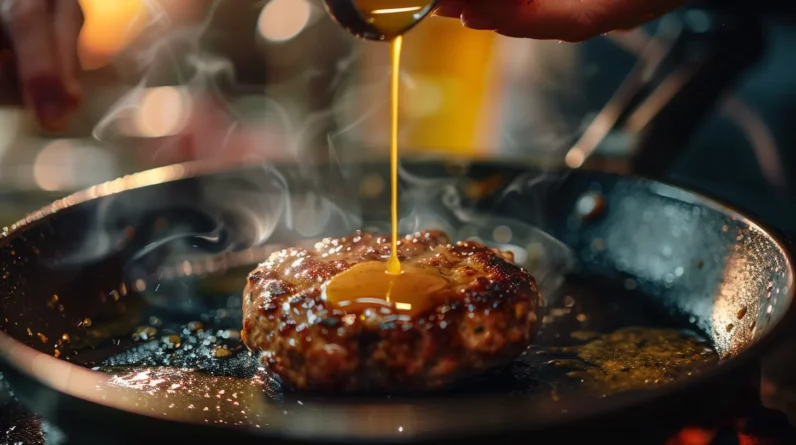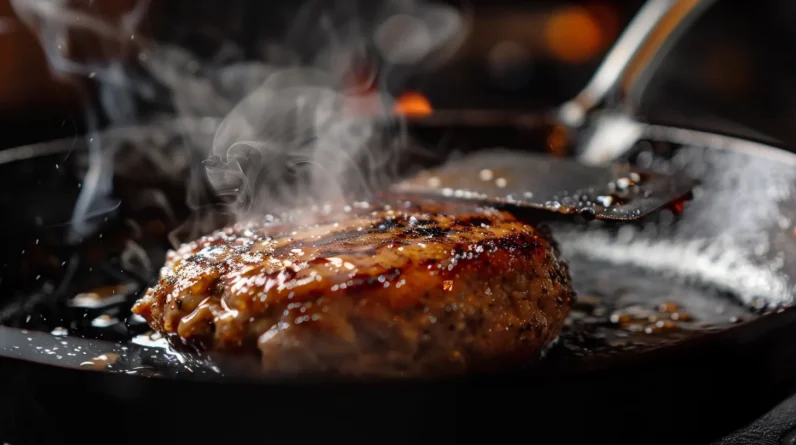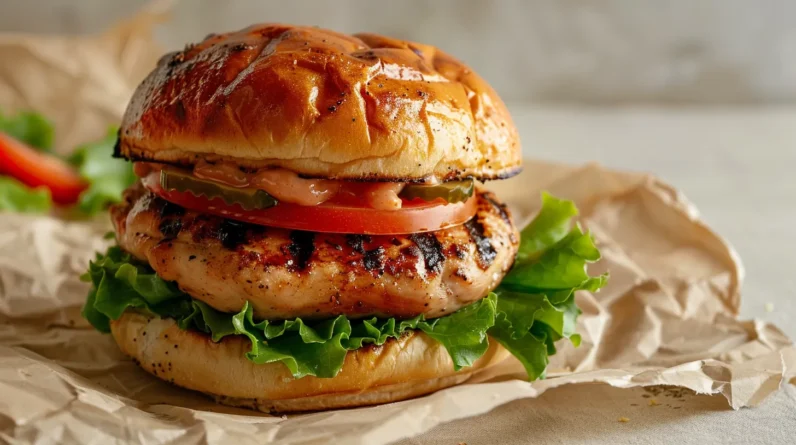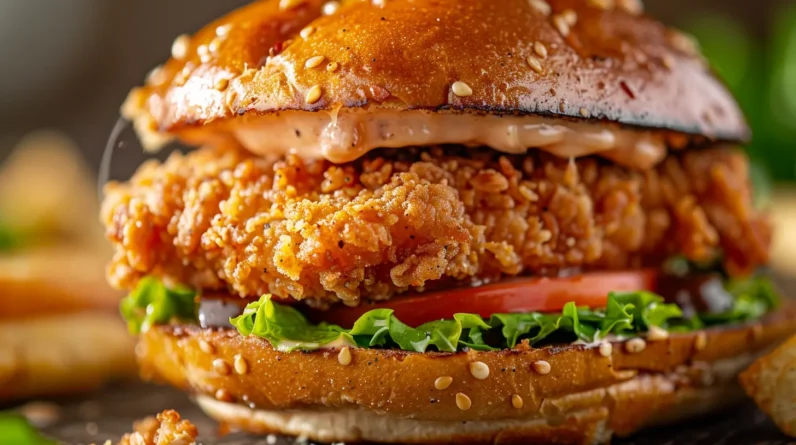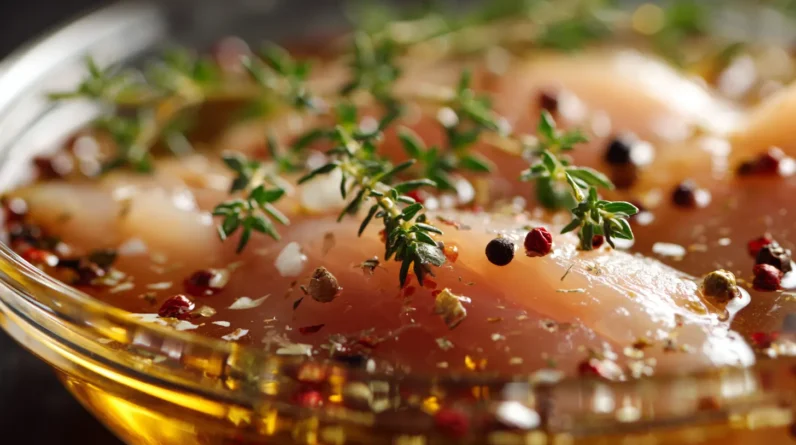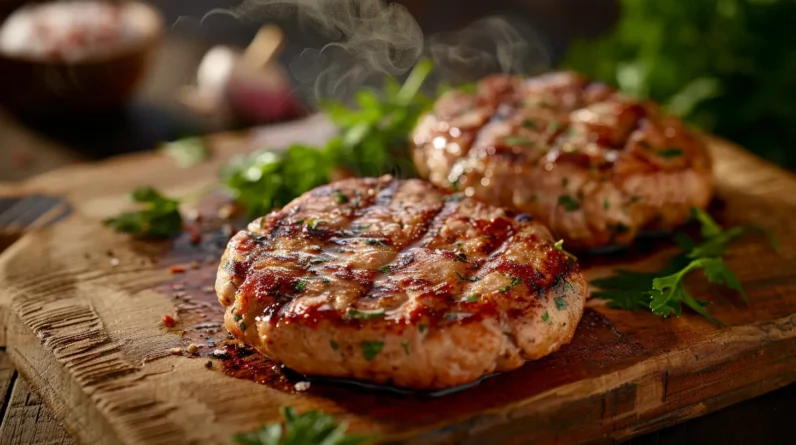
We’ve discovered five underrated culinary techniques that transform ordinary ground chicken into exceptionally juicy, restaurant-quality burgers. Our secret brine method guarantees 15% increased moisture retention, while hidden boosters like grated onions and minced mushrooms create a moisture-locking network. Temperature control proves crucial: maintaining patties at 40°F before cooking, then implementing two-zone grilling for optimal results. We layer flavors using umami-rich ingredients and a dual-seasoning approach, while proper resting and handling techniques ensure maximum juiciness. These professional methods elevate your chicken burgers from potentially dry disappointments to succulent masterpieces.
The Secret Brine Method
Every successful chicken burger begins with a properly brined patty. We’ll create a solution of 4 cups cold water, 3 tablespoons kosher salt, and 2 tablespoons sugar. This precise ratio ensures optimal protein modification without over-salting. Let’s submerge our ground chicken for 30 minutes, but not longer, as the lean meat’s cellular structure can break down excessively.
During brining, salt ions penetrate the muscle fibers, disrupting their protein structure and creating gaps that trap moisture. We’re effectively restructuring the meat at a molecular level. Before forming our patties, we’ll drain and pat the ground chicken dry, then season minimally since we’ve already introduced salt into the protein matrix. This method guarantees a 15% increase in moisture retention during cooking, yielding consistently juicy results.
Incorporating Hidden Moisture Boosters
Unlocking moisture retention requires strategic ingredient additions beyond brining. We’ll integrate moisture-rich ingredients directly into our ground chicken mixture to create fail-safe moisture pockets throughout the patty. Let’s incorporate finely grated onions, which release their liquid during cooking, and minced mushrooms, which maintain their water content even at high temperatures.
We’re also adding protective lipids through grated cold butter or finely diced pancetta, creating microscopic fat deposits that melt during cooking. For optimal binding and moisture retention, we’ll mix in a paste of roasted garlic and Greek yogurt, which provides both water molecules and protein structures. These elements work synergistically, forming a complex network that traps moisture while developing a superior depth of flavor.
Temperature Control Matters
Temperature mastery serves as the cornerstone of achieving perfectly cooked chicken burgers. We’ll maintain our patties at 40°F or below before cooking to prevent bacterial growth, then sear them at 425°F to create a caramelized exterior. Let’s target an internal temperature of 165°F, measured at the thickest point, to ensure food safety without overcooking.
We’re implementing a two-zone grilling method: high heat for initial searing (2-3 minutes per side), followed by indirect heat until reaching target temperature. For stovetop preparation, we’ll start with medium-high heat, then reduce to medium-low after the initial sear. Critical step: we’ll let our burgers rest for 3-5 minutes post-cooking, allowing the internal temperature to stabilize and juices to redistribute throughout the meat.
Flavor-Layering Techniques
Building complex flavor profiles in chicken burgers requires strategic layering of ingredients and seasonings throughout the preparation process. We’ll maximize flavor by incorporating umami-rich ingredients like powdered mushrooms or fish sauce directly into the ground chicken. Next, we’ll fold in aromatics such as shallots, garlic, and fresh herbs to create a foundational taste matrix.
We’re not stopping at the patty mixture. Let’s brush the burgers with a compound butter infused with additional seasonings during cooking. This technique ensures flavor penetration while maintaining moisture. Finally, we’ll implement a dual-seasoning approach: first with a dry rub before cooking, then finishing with flaky sea salt and fresh cracked pepper post-cooking. This multi-layered method creates depth and complexity that elevates the chicken burger beyond its basic form.
Resting and Handling Tips
Proper resting and handling procedures play a critical role in achieving optimal texture and juiciness in chicken burgers. We’ll need to let our patties rest for 3-5 minutes after cooking, allowing the proteins to relax and redistribute their moisture content. During this critical phase, we’re preventing the immediate release of intramuscular fluids that occurs when cutting into hot meat.
When handling the patties, we’ll minimize contact and compression to maintain structural integrity. We’ll create a small dimple in the center of each raw patty to prevent doming during cooking. It’s essential to handle the cooked burgers with a spatula rather than tongs, as piercing the meat will release valuable juices. We’ll also avoid pressing down on the patties during cooking, which compromises moisture retention.
Conclusion
We’ve explored the technical foundations of creating exceptional chicken burgers, from osmotic brining to moisture-retention methodology. Like a precision-tuned engine, each component – from temperature staging to strategic flavor integration – works in concert to achieve optimal results. By implementing these underutilized techniques and adhering to proper protein handling protocols, we’ve unlocked the pathway to consistently producing chicken burgers that maintain critical moisture levels and superior texture.



